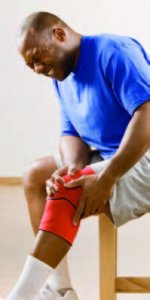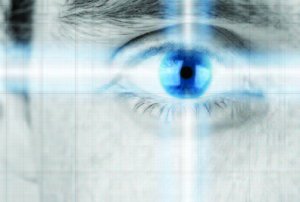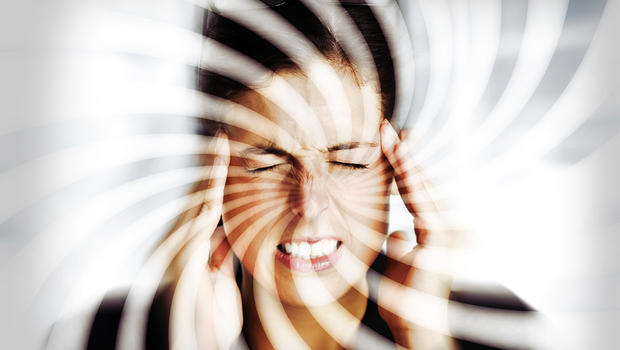by Specialdocs Consultants, LLC | Nov 20, 2017 | Medical Conditions, Patient News

The aching, swollen, stiff joints associated with osteoarthritis (OA) have long been considered an inexorable result of aging. According to conventional wisdom, cartilage, the smooth connective tissue on the end of bones that cushion the joints, simply breaks down over a lifetime of walking, exercising and moving, allowing the bones to rub together. When medications and physical therapy no longer provide relief, a costly and time-intensive mechanical joint replacement may be the only solution. However, advances in research and a focus on prevention are providing
a new outlook on an ageold problem…we bring you the latest insights, below.
Prevention
The connection between overweight and OA is even stronger than previously thought. Recent studies show that up to 65 percent of cases of OA of the knee could be avoided if weight was reduced. Consider that your knees bear a force equivalent to three to six times your body weight with each step, so a lighter weight relieves the burden considerably. For women, extra weight is even more of a risk factor than men. In addition, fat tissue produces proteins called cytokines that cause inflammation, and in the joints, this can alter the function of cartilage cells. Gaining weight results in your body releasing more of these harmful proteins. However, losing even a few pounds can reduce joint stress and inflammation and decrease by half the risk of OA.
Avoid practicing a sport in an intensive and prolonged way. An injured joint is nearly seven times more likely to develop arthritis than one that was never injured. The condition is now seen more frequently among 30 to 50-year-olds than previously because young athletes or middle-aged ‘weekend warriors’ who tear their anterior cruciate ligament (ACL) or menisci of the knee have a much higher risk of osteoarthritis 10 to 20 years after their injury. Take steps to manage or prevent diabetes, which may be a significant risk factor for OA. Some studies suggest high glucose levels trigger the formation of molecules that make cartilage stiffer and less resistant to stress, and cause inflammation that leads to cartilage loss.
Management
Low impact exercise is key to living well with osteoarthritis. While resting aching joints can bring temporary relief, lack of movement will ultimately lead to more discomfort.
Exercise strengthens the muscles around the joint, acting like a shock absorber, helping to reduce pain. In addition, exercise helps with weight control and is a natural mood elevator. Experts recommend low-impact activities like swimming, walking, biking, and moderate weight lifting. The Arthritis Foundation developed a form of tai chi specifically for people with arthritis,
featuring agile steps and a high stance, that helps increase flexibility and improve muscle strength inthe lower body.
Some new approaches to pain management show promise, but beware of unsubstantiated claims. Platelet-rich plasma (PRP) injections, which involve withdrawing blood, spinning
it to separate the platelets and then injecting the concentrated platelets into a joint, are being studied for long-term effectiveness. Experts advise against costly supplements such as glucosamine, chondroitin and shark cartilage, all of which have proven of little benefit for people with OA. Some elements of Chinese medicine, including herbs and acupuncture, may help control OA symptoms in some people, but these therapies have not yet been confirmed in large, well-designed clinical studies. Also unproven are low-power laser light, copper bracelets or magnets, chiropractic manipulation and acupressure. The most effective over the counter medication are NSAIDs (non-steroidal anti-inflammatory drugs such as Advil). While Tylenol helps reduce pain and is the safest medicine for older people or those with kidney disease, it does not lower inflammation.
Finally, if you do need an orthopedic implant in the future, take comfort in the fact that development of the next generation of devices is well underway. They will likely be biologic, composed of protein and cells instead of metal and plastic,…functioning as well as a normal joint and created to last a lifetime.
The post Joint Assets appeared first on Specialdocs Consultants.
by Specialdocs Consultants, LLC | Nov 20, 2017 | Healthy Aging, Medical Conditions, Patient News

In the not so distant past, age-related macular degeneration (AMD), characterized by a loss of central vision, was deemed just another unfortunate consequence of growing older. The gradual breakdown of light-sensing retinal tissue that results in a blind spot directly ahead has caused each generation to struggle with driving a car, reading a printed page or recognizing a friend’s face. As the population ages, the sheer number of people affected grows rapidly. Another case of AMD is diagnosed every three minutes in the U.S. More than 2.1 million Americans with advanced AMD now will grow to 3.7 million by the year 2030, according to the National Eye Institute, who warns the condition will soon take on aspects of an epidemic. A surge of clinical trials and investigative research aims to prevent that from happening, with sights set firmly on restorative, curative solutions.
Scientists exploring the possible causes have made much progress isolating a group of genes that increases the likelihood of an individual developing AMD. Other studies point to inflammation as the trigger. The macula needs a constant, rich blood supply to work correctly, and any interference such as narrowing of the blood vessels, fatty plaque deposits, or a shortage of antioxidants, can cause the macula to malfunction and become diseased.
Treatments have likewise advanced. Last fall, a decades-old drug used to treat HIV/AIDS was reported in Science as unexpectedly exhibiting the capability to halt retinal degeneration. Nucleoside reverse transcriptase inhibitors, known as NRTIs, are already FDA-approved and can be rapidly and inexpensively translated into therapies for both dry and wet AMD (see sidebar), say the study’s authors. At the same time, a nanosecond laser treatment was successfully used to reduce drusen (small fatty deposits beneath the retina) and the thickening of Bruch’s membrane, both hallmark features of early AMD. Importantly, the structure of the retina remained intact, suggesting “this treatment has the potential to reduce AMD progression,” according to Medical News Today. Stem cell transplantation shows enormous promise, as reported in Lancet, with sight restored long-term to a group of patients with severe vision loss. Additionally, injectible drugs and pills that target inflammation associated with AMD are in nationwide trials.
Technological innovations to help AMD patients include the 2013 introduction of a miniature telescope implanted behind the iris to magnify images. Google is moving into the space with a patent for a contact lens containing a built-in camera that will enable audible warnings via a remote device, detect and describe faces, and act as a text reader.
Today’s AMD patients have no shortage of low-vison aids to help them adapt and live well. Google is developing a patent for a contact lens containing a built-in camera that will enable audible warnings via a remote device, detect and describe faces, and act as a text reader. Additional solutions range from ‘smart’ thermostats, watches and remote controls to talking devices.
Finally, understanding who is at risk for developing AMD can be key to prevention. These include: white, female, smoker, family member with AMD, high blood pressure, lighter eye color, obesity, and possibly, over-exposure to sunlight. To minimize risk, follow a healthy diet with plenty of leafy green vegetables and fish high in omega-3 fatty acids, exercise to keep weight and blood pressure under control, eliminate tobacco use, and wear sunglasses to protect from UV rays and high-energy visible (HEV) radiation.
When Dry Becomes Wet
Diagnosis of AMD is first confirmed with a visual acuity exam and testing with an Amsler grid. Those with AMD see the grid’s straight lines as wavy or blurred with dark areas at the center. Additional tests help determine the type of AMD — the dry form affects about 85 percent of AMD patients, and in about 10 to 15 percent of cases, progresses to wet. The difference is significant. The wet form usually leads to more serious vision loss, caused by new blood vessels that leak fluid and blood beneath the retina, resulting in permanent damage. While no treatment currently exists for dry AMD, in the last decade, a number of effective therapies have been implemented for wet AMD. These include monthly, intraocular injections (anti-VEGF) to inhibit a protein that stimulates formulation of new blood vessels, photodynamic or ‘cold’ laser treatment, thermal (heat) laser photocoagulation…and on the horizon are topical eyedrops that may someday replace injections. Nutritional supplements containing antioxidant vitamins, lutein and zeaxanthin are also effective in reducing the chances of dry AMD worsening to wet.
The post In Our Sights: Sharper Focus on Macular Degeneration Offers New Hope appeared first on Specialdocs Consultants.
by Specialdocs Consultants, LLC | Nov 20, 2017 | Medical Conditions, Patient News

Common, rarely life-threatening, but very unsettling, an attack of dizziness or vertigo can send your world into a spin with simple acts like turning around to back up a car, bending down to tie a shoe or looking up at the sky.
A range of sensations may keep you off balance, from tilting, swaying, whirling and floating, to feeling lightheaded, or conversely, heavy-headed. The swirl of symptoms may seem similar, but there are important differences that define these conditions:
- Dizziness: lightheadedness, faintness
- Vertigo: spinning, a sense that the room is moving, akin to the tipsy feeling from too much alcohol
- Disequilibrium: unsteadiness, a feeling you are about to fall
While dizziness or vertigo represent some of the most frequent reasons people visit their doctors – an estimated one out of four adults has sought treatment for the condition at some point – getting to the root cause can sometimes be a frustrating experience, say experts at the Vestibular Disorders Association. That is because numerous issues can trigger dizziness/ lightheadedness, from cardiovascular concerns such as arrhythmia, atherosclerosis and low blood pressure or conditions such as dehydration, low blood sugar or anemia. Vertigo is caused by head injuries/trauma, disorders of the vestibular system (parts of the inner ear and nervous system that control balance) or rarely, the cerebellum. In addition, aging itself can affect the vestibular system’s function by decreasing the number of nerve cells, and diminishing blood flow to the inner ear.
The post A Quick Spin on Dizziness, Vertigo and Other Balance Disorders appeared first on Specialdocs Consultants.




Recent Comments